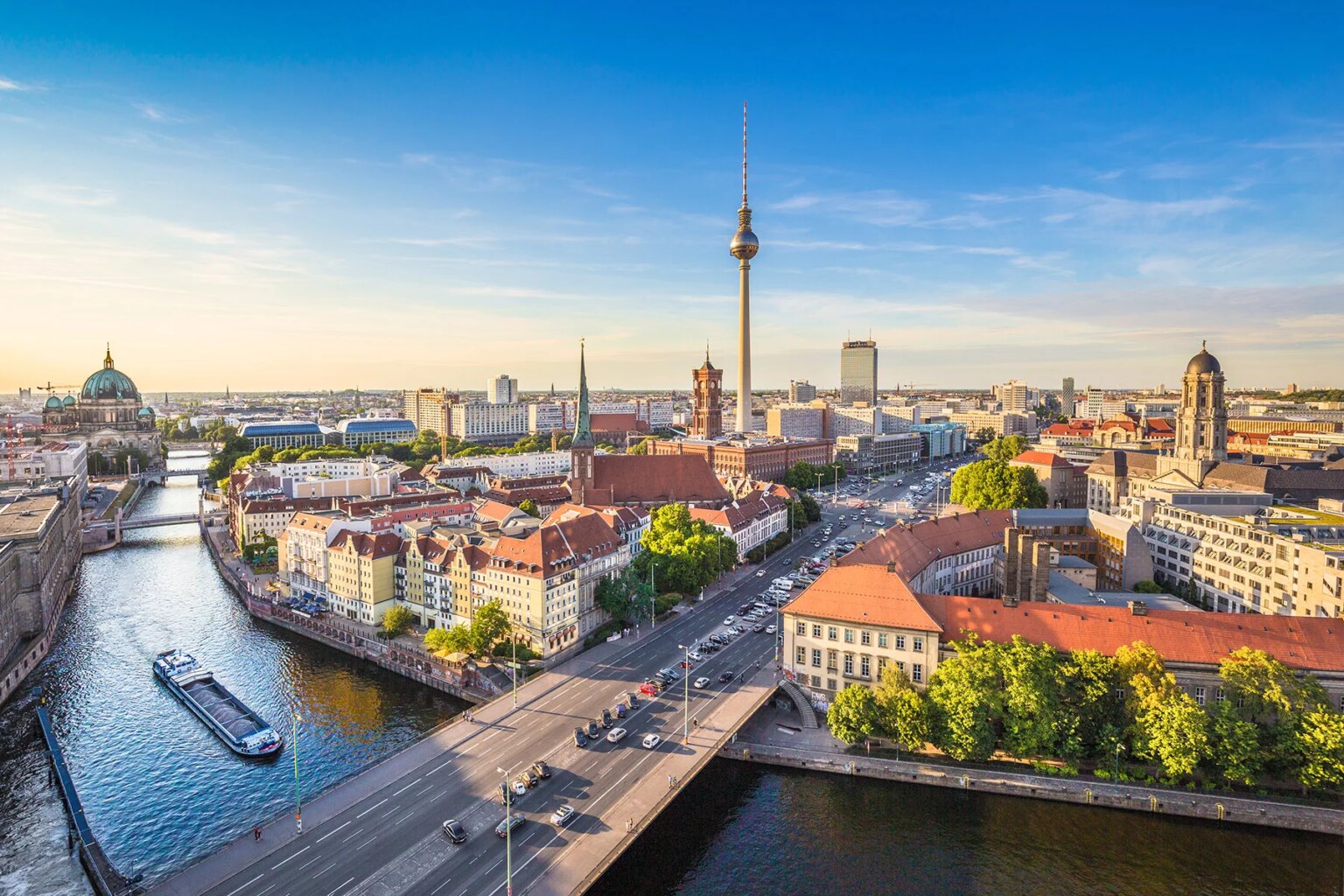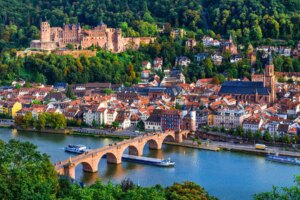Germany boasts one of the highest qualities of life in the world. According to the 2023 Mercer Quality of Life Survey, six German cities make it into the global top 30. Frankfurt, Munich, and Düsseldorf even cracked the top 10.
Germany also shines in infrastructure, scoring high for public transportation, traffic flow, and airport efficiency, and has an affordable cost of living to boot.
If you’re debating your next move, this article will help you find the best cities in Germany to call home:
Uniplaces
Find your new student home with Uniplaces. With cozy flats and rooms available across the globe, Uniplaces is a great option to start your search. They provide authentic photos, verified listings, and tenant protections. Visit Uniplaces online and discover your next student room.
Berlin
Laid-back Berlin is ranked 18th on the Mercer Quality of Life Survey. Much of the city was destroyed in the Second World War, and it underwent extensive rebuilding after the reunification of East and West Germany.

Berlin is very green, with parks, forests, lakes, and rivers covering an amazing third of the city. The districts within it are varied, each with its own distinct atmosphere:
- Charlottenburg is an upmarket – somewhat sedate – area in west Berlin with beautiful 19th-century townhouses
- Kreuzberg is a fashionable, multicultural area that has traditionally been a major center for the city’s Turkish and alternative residents
- Wedding, traditionally working-class, is up and coming
- Prenzlauer Berg is a gentrified area that still attracts artists and students.
- Expensive Wilmersdorf, with its beautiful 19th-century buildings, borders Berlin’s most prestigious area: Grunewald.
Düsseldorf
Ranked 10th in the world for quality of life, Düsseldorf is a beautiful cosmopolitan city straddling the Rhine River. It is home to banks, industry, media companies, multi-national HQs, museums, restaurants, markets, and great international schools.
There are 50 stadtteile (districts) across the city:
- Stadmitte is a mix of cultures, with rich and poor side by side. Houses are rare, and apartments expensive, but for some, it’s the place to be.
- Pempelfort, with its diverse cultural scene and up-and-coming Hafen, are both popular with singles and younger people
- Bilk is a densely populated area filled with foreigners and students who enjoy its thriving nightlife and many green, open spaces
- Close to the river, Oberkassel is perhaps the most attractive part of the city, with its art nouveau architecture and prices to match
- Niederkasse is a sought-after area – and home to over a quarter of the city’s Japanese population
Frankfurt
With its skyscraper skyline, Germany’s financial capital looks a little like Manhattan. Frankfurt is ranked 6th in the world for quality of life and is surrounded by suburbs that house almost 500,000 commuters.
Newly built homes can be found in Reidberg, the West and East Harbour, Rebstockpark, and Friedberger Warte. Older mansions (and consulates) fill leafy Westend, Holzhausen Quarter, Poets’ Quarter (Dichterviertel), and the Diplomatenvierte. Singles enjoy the restaurants and bars in Sachsenhausen and parts of Nordend.
Hamburg
Hamburg – or, to give its full name, the Free and Hanseatic City of Hamburg – is one of 16 federal states and ranked 25th best for quality of life. With 1.8 million inhabitants, it is the second-largest city in Germany.

Although it’s a vast city, people have more living space than all the other major cities in the world. There are also loads of green open spaces, rivers, and canals. The city is home to over 2,000 bridges, which is more than Venice and Amsterdam combined!
Hamburg’s districts are varied:
- Altona is undoubtedly a popular residential district with beautiful old architecture, restored old factories, and large, expensive villas with river views
- Eimsbüttal is upmarket and trendy, and where you’ll find the University
- Wandsbek, in the far northeast of the city, has the highest number of residents and is a mainly suburban area divided into precincts and quarters
- Hamburg Nord is traditionally working class with a few wealthy enclaves
- Bergedof, to the south of the city, was once an independent town. It still has its own castle, which is now a museum.
Munich
Munich may rank high in the Quality of Life Survey at 7th place, but you do pay for it; it is the fourth most expensive city in Germany and the 37th most expensive city in Europe.
Its districts include:
- Close to the universities, Schwabing is popular with students and young people
- Maxvorstadt is known for its trendy shops and cafes
- Isarvorstadt is the city’s LGBT+ area with lots of nightclubs
- Haidhausen, on the right bank of the river Isar, is popular with working professionals
- Lehel and Bogenhausen are both extremely expensive. The first mainly consists of apartments, catering to the city’s stylish ‘in-crowd’. The second features grand villas that house Munich’s old money.
Nuremberg
Nürnberg (or Nuremberg in English) is situated near the Pegnitz river and Rhine-Main-Danube canal. This beautiful city in the state of Bavaria has a reputation for being urban yet tranquil, with a high percentage of foreign residents. It is ranked 31st in the world for quality of life.

The city has many apartments in stunning art nouveau buildings and converted factory loft spaces. Among the most desirable areas are Moegeldorf, Rehof, Laufamholz, and Zerzabelshof.
Stuttgart
Finally, Stuttgart ranks 26th in the world for quality of life. Spread across several hills, valleys, and parks, the city features homes on steep hillsides with awesome views.
Accommodation in the very heart of the city is certainly at a premium. However, there are plenty of other districts to choose from:
- Stuttgart-West is an attractive area not far from the city center, with shops, markets, cafes, theaters, and parks all within easy walking distance.
- Killesberg and Dogerloch are fairly exclusive areas, with spectacular green spaces
- Sindelfingen, Böblingen, and Vaihingen may be further out, but you have more chance of finding accommodation with a garden








